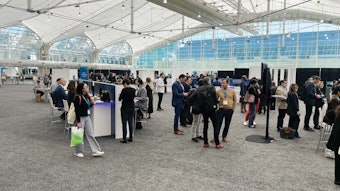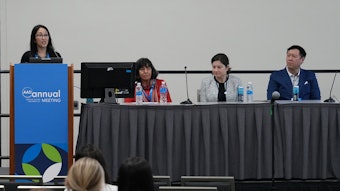Hormonal therapies for acne and androgenetic alopecia
A plus for men and women.

U046 – The Role of Topical Therapies Involving Androgen Hormones in Acne and Androgenetic Alopecia (AGA)
4:30-5:30 p.m. | Saturday, March 9
Location: Room 6B
Hair follicles, the skin’s epidermal layer, and sebaceous glands are among the body’s most androgen-responsive tissues. Saturday’s session, U046 – The Role of Topical Therapies Involving Androgen Hormones in Acne and Androgenetic Alopecia (AGA) will explore the prominence androgens play in skin and hair health.
Dermatologists now have access to an array of oral and topical treatment options for acne and AGA that target androgen receptors, with many more in development. Session director Lawrence J. Green, MD, FAAD, clinical professor of dermatology at the George Washington University School of Medicine in Washington, D.C., will lead the discussion on the role of androgens and other hormones in the pathogenesis of acne and AGA, the latest clinical evidence regarding topical and anti-androgen treatments for acne and AGA, and new topical and oral anti-androgen therapies available and under investigation.
“Skin is a peripheral organ that locally synthesizes significant amounts of androgens. Hair growth and sebum production are also highly androgen regulated,” Dr. Green said.
New hope for a predominant condition
Acne vulgaris is one of the most common skin conditions, affecting more than 90% of the world population. The role of anti-androgen medication for acne has been recognized with oral spironolactone, an androgen receptor blocker, the most widely used for females with hormone acne pattern related to their menstrual cycle around the chin, jawline, and neck. But an emerging approach to consider, Dr. Green said, is the long-term use of spironolactone for treating all types of acne, including on the back, chest, and forehead in females of all ages.
Dr. Green will also discuss the new kid on the block: clascoterone (cortexolone 17alpha propionate), the first topical androgen antagonist developed to treat acne in both male and female patients and the only such agent to receive FDA approval for treatment of acne in patients 12 years of age and older. Hormonal therapy can be effective and potentially safer for long-term use for treating acne compared to oral antibiotics.
Benefitting men and women equally
“Clascoterone binds to the androgen receptor and inhibits androgen-related lipid and cytokine productions,” he said. “The hope is that we’ll start using more clascoterone in our treatment armamentarium for men and women with acne and spironolactone for women long-term because it encourages antibiotic prudence.”
Although clascoterone has been approved for the treatment of acne, it’s still in the clinical trial phase for male and female pattern hair loss, said session panelist Ken Washenik, MD, PhD, FAAD, medical director of the Bosley Medical Group in Beverly Hills and a faculty member in the Ronald O. Perelman department of dermatology at the NYU Langone School of Medicine. Dr. Washenik will discuss the potential promise of topical androgen modulating drugs for AGA.
An optimistic outlook
“We are following the development of potent androgen receptor blockers that will have minimal or no systemic androgen modulating effect and the topical use of the 5-alpha reductase inhibitor, finasteride,” Dr. Washenik said. “It is used off-label by some practitioners in the U.S., but no topical formulation has been approved by the FDA. The topical use of finasteride has been approved in Europe. Topically active androgen modulators, including androgen receptor blockers, androgen receptor degraders, and 5-alpha reductase inhibitors are an active area of drug research. I remain optimistic we’ll see more promising topicals in the not-too-distant future.”
Tomorrow afternoon’s session will also include Adelaide A. Hebert, MD, FAAD, who will discuss the role of topical therapies involving androgen hormones in acne; and Maryanne Makredes Senna, MD, FAAD, who will discuss the role of androgens in female pattern hair loss and AGA pathogenesis.











